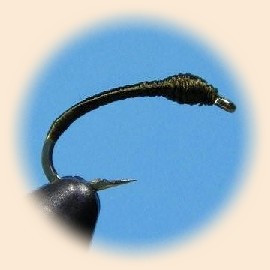|
The t.c.t.k. emerged from scooping stuff out of a small
central Idaho river with an aquarium net last year –
specifically, midge larvae. I found a hook of the appropriate
size and a type and color of thread that would represent what
I knew to be a favorite food of the bows and brookies in this
little river – a little river with some pretty big fish in it,
and tied up some examples.
About a month ago, while sight fishing to an 18" rainbow in this
same river, I drifted three patterns by it without moving it. I
decided to give the t.c.t.k. a shot. On the first cast, the bow
took the fly. Many more fish went for it that afternoon. A
couple days later, I was fishing the same river, sight fishing
to another good sized rainbow. He was near the opposite bank in
a pocket of soft water with instream cover above and below him
with a hard current between us. On my third or fourth cast, I
got a good drift right on the edge of the hard water. As my
dry fly indicator floated past the bow, I saw him turn and then
move into the faster water and chase down the t.c.t.k. – he chased
it a good six feet before he caught it.
Since then, I've fished this fly several more times on its river
of origin, a couple times on a small spring creek in the central
mountains of Idaho, four times on Southeastern Idaho's South Fork
of the Snake River, and once on a Spring Creek in the area where
the fish have all the time they want to look at what you are
drifting by them. Many bows, browns, brookies, cuts, cuttbows,
and mountain whitefish in these various waters have fallen prey
to this simplest of flies.
Materials:
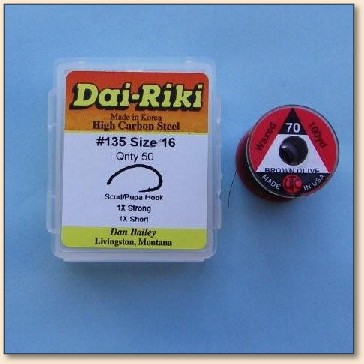
Hook: Size 16 Dai-Riki 135 .
Thread: UTC 70 denier Brown Olive fly tying thread.
Tying Instructions:
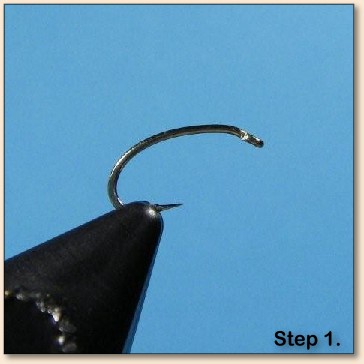
1. Debarb hook and place in vice.

2. Start thread behind the eye. Wrap down into the bend of the
hook and back up to behind the eye to form a smooth thread body.
A second trip down to the bend and back to behind the eye is optional.
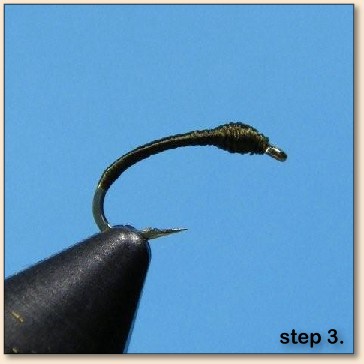
3. With the tying thread, form a bump behind the eye, about
as long as the eye of the hook and two to three times the
diameter of the hook shank.
4. Whip finish. Head cement is optional.
On smaller, slower or shallower water, I fish this beneath a
dry fly. On larger, faster or deeper water, I'll trail it
off a weighted stone fly nymph. On a recent day on the South
Fork, fishing the t.c.t.k. behind a brown rubber legs, I took
15 browns, 10 cutthroat, and 15 mountain whitefish in about
five hours in a variety of water. Two thirds of them preferred
the midge to the stone fly.
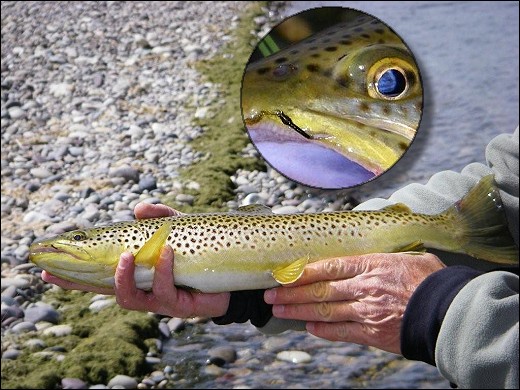
Oh yeah – t.c.t.k. stands for "twelve cent trout killer. ~ John Scott
For more great flies, check out:
Beginning Fly Tying,
Intermediate Fly Tying and Advanced
Fly Tying.
|

